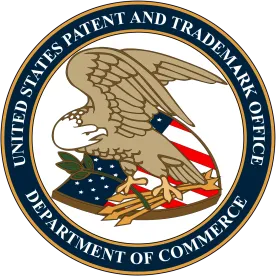The decriminalization of cannabis in some states, and its partial decriminalization at the federal level, has created an explosive market for cannabis itself and the myriad chemicals that compose the plant. The 2018 Farm Bill (i.e., Agriculture Improvement Act of 2018) decriminalized those cannabis plants and parts having low concentrations (up to 0.3% by dry weight) of delta-9-tetrahydrocannabinol (Δ9-THC). Such low Δ9-THC plants are defined as “hemp,” whereas higher Δ9-THC plants are labelled “marijuana” and remain illegal under federal law.
The Newly Popular “Delta 8”
Some popular cannabis products can be derived from hemp, and therefore legally bought and sold (under certain conditions). One prominent example is cannabidiol, popularly known as “CBD.” CBD is sold in numerous products and is a popular alternative remedy. Another more recent example is delta-8-tetrahydrocannabinol (Δ8-THC), which is an isomer of Δ9-THC. Δ8-THC is intoxicating (unlike CBD), but less so than Δ9-THC. Δ8-THC is also found in very low concentrations in cannabis plants, such that it is often synthesized from CBD rather than being directly extracted from the plant.
Because Δ8-THC is synthesized from CBD, which can be legally extracted from hemp, there is a widespread public belief that Δ8-THC is also legal. However, health warnings about Δ8-THC were published by the Centers for Disease Control and Prevention and the Food and Drug Administration in September 2021. Further, the U.S. Department of Justice issued interim guidance in August 2020 concluding that the Farm Bill had no impact on the legal status of any synthetic tetrahydrocannabinols:
The AIA does not impact the control status of synthetically derived tetrahydrocannabinols (for Controlled Substance Code Number 7370) because the statutory definition of ‘hemp’ is limited to materials that are derived from the plant Cannabis sativa L. For synthetically derived tetrahydrocannabinols, the concentration of Δ9-THC is not a determining factor in whether the material is a controlled substance. All synthetically derived tetrahydrocannabinols remain schedule I controlled substances.
But whether Δ8-THC that is synthesized from CBD is a “synthetically derived tetrahydrocannabinol” remains an open question. Indeed, in response to a letter from the Alabama Board of Pharmacy regarding Δ8-THC’s status under the Controlled Substances Act, the Drug Enforcement Agency (DEA) stated that Δ8-THC “synthetically produced from non-cannabis materials is controlled under the CSA as a ‘tetrahydrocannabinol.’” Conversely, “cannabinoids extracted from the cannabis plant that have a Δ9-THC concentration of not more than 0.3 percent on a dry weight basis meet the definition of ‘hemp’ and thus are not controlled” substances. One interpretation of the CSA could be that Δ8-THC synthesized from CBD that was directly extracted from hemp is not a controlled substance. Another interpretation could be that the hemp exemption only applies to what is extracted from the plant, but potentially not products made from such extracts.
However, trademark decisions by the United States Patent and Trademark Office (USPTO) indicate that the agency takes a different view of Δ8-THC’s federal legality. At this early stage it could be a mere aberration, or it could be a harbinger of future actions from other federal agencies.
This is an important issue for all members of the cannabis community, and of particular importance to those seeking federal trademark protection for their Δ8-THC goods.
The USPTO Position
The first significant action taken by the federal government based on the legal status of Δ8-THC seems to come from the USPTO. To date, only about 40 trademark applications have been filed for goods and services specific to Δ8-THC. Of those, only around five have been acted upon by the USPTO. In every case, the USPTO has refused to register the marks, taking the position that the goods and services are illegal under federal law.
As explained in our previous alert, only trademarks for legal goods and services may be registered federally, and the USPTO has long refused to register trademarks for those cannabis goods that are banned by federal law. In these recent cases, the USPTO, upon discovering that the applied-for mark is intended to be used with a Δ8-THC product, argued that Δ8-THC violates federal law, and is prohibited from registration under the Federal Circuit’s Gray v. Daffy Dan’s Bargaintown decision and others. The refusals cite the Farm Bill of 2018, and the Department of Justice’s interim guidance. The refusals also cite Forbes magazine as evidence that commercial Δ8-THC is synthetic and therefore does not fall within the Farm Bill’s definition of “hemp.”
The USPTO’s logic in each case was the same. The USPTO assumes that any Δ8-THC product is synthetic and not extracted from a cannabis plant based on the Forbes article stating that cannabis plants contain too little Δ8-THC to be of industrial use. The USPTO then cites the Interim Guidance that synthetic cannabinoids are per se illegal and that their status was not changed by the Farm Bill of 2018.
Interestingly, the first office action from the USPTO was less certain as to this alleged illegality. In June 2021, the USPTO responded to an application for products containing Δ8-THC using the (aptly named) mark BARELY LEGAL. In this “potential unlawful use inquiry,” the USPTO noted that the Δ8-THC products “may be unlawful under the Federal Controlled Substances Act” and in turn required the applicant to answer several questions about its goods. However, upon the applicant’s response, the USPTO solidified the position it has taken elsewhere that the products involve a per se violation of federal law.
What Does This Mean for the Δ8-THC Industry?
The USPTO’s actions mean a couple of things for manufacturers and sellers of products containing Δ8-THC. First, it is unlikely that anyone is going to be able to successfully federally register a mark on Δ8-THC products in the near term. While there is currently only a small sample size, the USPTO seems to be taking a consistent position on Δ8-THC products’ illegality and rejecting applications on that basis. It is worth noting, however, that besides the simple Q&A styled response from BARELY LEGAL, no other applicants have responded. While unlikely, the USPTO may change its tune once the applicants have a chance to defend their position. It is also possible that the USPTO would take a different position if an applicant could state on the record that its Δ8-THC is extracted directly from low Δ9-THC hemp plants (which were decriminalized by the Farm Bill of 2018) and is not chemically synthesized. But based on current Δ8-THC production methods, this is also unlikely.
Second, the USPTO’s actions (and those of the FDA and CDC) may be a hint that federal guidance clarifying Δ8-THC’s legality is forthcoming. The USPTO’s actions solidifying this position have all occurred since late July, so these USPTO decisions are relatively recent. But it is also possible that the USPTO made an internal determination regarding Δ8-THC’s illegality that is not reflective of a greater federal scheme.
The question remains as to what manufacturers and sellers of products containing Δ8-THC should do to protect their brand. It may still be worthwhile to file a federal application in case future guidance clarifies Δ8-THC’s legality, allowing registration of these marks. As explained in our previous alert, state-level trademark registration is available in states where Δ8-THC is legal, as is common law trademark protection. Either way, brand protection is an important aspect of every business, so documenting use of any trademarks may help down the road as to any common law trademark arguments.




 />i
/>i

